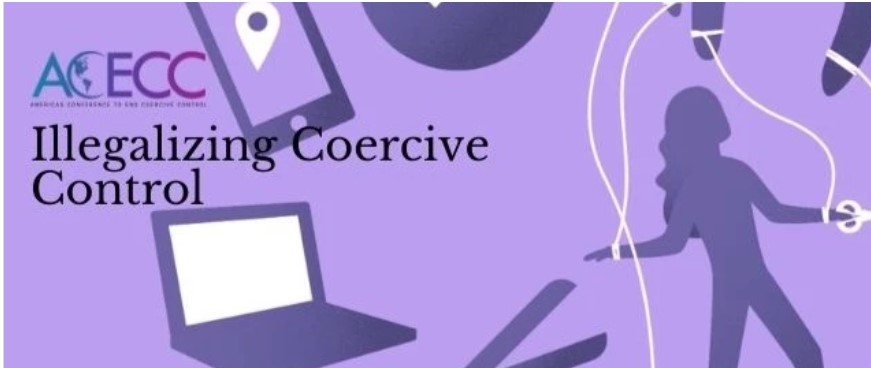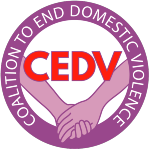Coercive Control: Do We Really Want to Outlaw Nagging?
Coercive control — sometimes referred to as “nagging” — is harmful to human relationships and can predispose to other forms of abuse. According to the Centers for Disease Control, coercive control includes “behaviors that are intended to monitor and control or threaten an intimate partner.” The NISVS 2010-2012 State Report (Tables 5.2 and 5.5) reports that the majority of coercive control victims are men. Each year:
- 17.5 million male victims
- 12.6 million female victims
While the Coalition to End Domestic Violence supports efforts to educate the public about the harm effects of psychological abuse, defining coercive control as a type of domestic “violence” is harmful, for a variety of reasons:
- Vague and Overly-Broad Definitions: A review of the definitions in current state laws — see below — reveals they are filled with subjective and unexplained terms such as “are not limited to,” “pattern of behavior,” “free will,” “personal liberty,” “controlling,” “monitoring,” “basic necessities,” “communications,” “daily behavior,” and more.
- Free Speech: Harvard University has decreed that refusing to use a person’s preferred gender pronouns is a form of sexual misconduct and harassment. But coerced speech is a violation of free speech.
- False Allegations: Definitions of coercive control are so vague that accused persons have little or no defense against an unfounded allegation. Ten percent of Americans report being falsely accused of abuse.
- Wrongful Convictions: Wrongful convictions are a major problem in American criminal law. A finding of “coercive control” under civil law later can be used as evidence in a criminal case. In California, for example, the jury instructions state, “you may, but are not required to, conclude from that evidence [of coercive control] that the defendant was disposed or inclined to commit domestic violence.”
- Disservice to Victims of Physical Violence: Law professor Leigh Goodmark has predicted that “prosecutions of women would skyrocket” under coercive control laws. This would dissipate the availability of criminal justice resources for victims of physical violence.
- Neglect of Mental Health Approaches: Coercive control is a mental health and partner communication issue. But all of the current coercive control laws focus on legal and criminal interventions, excluding the role of couples counseling and other mental health approaches.
- Nothing is Domestic Violence: Supreme Court Justice Scalia once argued, “When [activist groups] impose their all-embracing definition on the rest of us, they not only distort the law, they impoverish the language. When everything is domestic violence, nothing is.”
- Sexism: As reported by the CDC, females are the most common perpetrators of coercive control. But coercive control activists typically portray the issue in terms of male-on-female abuse. For example, the website of the Americas Conference to End Coercive Control makes no mention of the CDC statistics, and features this one-sided image of an abused female:

Commentator Wendy McElroy explains that broad definitions of abuse would encompass “lover’s quarrels (verbal abuse), threats of leaving the relationship (psychological), and imposing a budget (economic).” This would potentially turn virtually every American into a perpetrator of domestic violence, a victim, or both.
- Bettina Arndt: Women are Great at Coercive Control
LEGISLATIVE STATUS
Connecticut: SB 1091 applies to all family court proceedings: restraining orders, divorce, and custody cases. The law defines coercive control as:
a pattern of behavior that in purpose or effect unreasonably interferes with a person’s free will and personal liberty. “Coercive control” includes, but is not limited to, unreasonably engaging in any of the following:
(A) Isolating the family or household member from friends, relatives or other sources of support;
(B) Depriving the family or household member of basic necessities;
(C) Controlling, regulating or monitoring the family or household member’s movements, communications, daily behavior, finances,
economic resources or access to services;
(D) Compelling the family or household member by force, threat or intimidation, including, but not limited to, threats based on actual or
suspected immigration status, to (i) engage in conduct from which such family or household member has a right to abstain, or (ii) abstain from conduct that such family or household member has a right to pursue;
(E) Committing or threatening to commit cruelty to animals that intimidates the family or household member; or
(F) Forced sex acts, or threats of a sexual nature, including, but not limited to, threatened acts of sexual conduct, threats based on a person’s sexuality or threats to release sexual images.
California: SB 1141 amends the family law code to include coercive control, which is defined as:
Hawaii: HB 2425 defines coercive control as:
a pattern of threatening, humiliating, or intimidating actions, which may include assaults, or other abuse that is used to harm, punish, or
frighten an individual. “Coercive control” includes a pattern of behavior that seeks to take away the individual’s liberty or freedom and strip away the individual’s sense of self, including bodily integrity and human rights, whereby the “coercive control” is designed to make an individual dependent by isolating them from support, exploiting them, depriving them of independence, and regulating their everyday behavior including:
(1) Isolating the individual from friends and family;
(2) Controlling how much money is accessible to the individual and how it is spent;
(3) Monitoring the individual’s activities, communications, and movements;
(4) Name-calling, degradation, and demeaning the individual frequently;
(5) Threatening to harm or kill the individual or a child or relative of the individual;
(6) Threatening to publish information or make reports to the police or the authorities;
(7) Damaging property or household goods; and
(8) Forcing the individual to take part in criminal activity or child abuse.
Washington: HB 1901 provides this sweeping definition:
“Coercive control” is defined to mean a pattern of behavior that is used to cause another to suffer physical, emotional, or psychological harm, and in purpose or effect unreasonably interferes with a person’s free will and personal liberty. In determining whether the interference is
unreasonable, the court must consider the context and impact of the pattern of behavior from the perspective of a similarly situated person.
Examples of coercive control include, but are not limited to, engaging in any of the following:
• intimidation or controlling or compelling conduct by:
• damaging, destroying, or threatening to damage or destroy, or forcing the other party to relinquish, goods, property, or items of special value;
• using technology to threaten, humiliate, harass, stalk, intimidate, exert undue influence over, or abuse the other party, including by engaging in cyberstalking, monitoring, surveillance, impersonation, manipulation of
electronic media, or distribution of or threats to distribute actual or fabricated intimate images;
• driving recklessly with the other party or minor children in the vehicle;
communicating, directly or indirectly, intent to:
• harm the other party’s children, family members, friends, or pets, including by use of physical forms of violence;
• harm the other party’s career;
• attempt suicide or other acts of self-harm; or contact local or federal agencies based on actual or suspected immigration status;
• exerting control over the other party’s identity documents; making, or threatening to make, private information public, including the other party’s sexual orientation or gender identity, medical or behavioral health information, or other confidential information that jeopardizes safety; or
• engaging in sexual or reproductive coercion;
• causing dependence, confinement, or isolation of the other party from friends, relatives, or other sources of support, including schooling and employment, or subjecting the other party to physical confinement or restraint;
• depriving the other party of basic necessities or committing other forms of financial exploitation;
• controlling, exerting undue influence over, interfering with, regulating, or monitoring the other party’s movements, communications, daily behavior, finances, economic resources, or employment, including but not limited to interference with or attempting to limit access to services for children of the other party, such as health care, medication, child care, or school-based extracurricular activities;
• engaging in vexatious litigation or abusive litigation as defined in RCW 26.51.020 against the other party to harass, coerce, or control the other party, to diminish or exhaust the other party’s financial resources, or to compromise the other party’s employment or housing; or
• engaging in psychological aggression, including by inflicting fear, humiliating, degrading, or punishing the other party.
On February 22, 2021, 11 persons testified against HB 2011. Their testimonies can be read HERE and viewed HERE.


